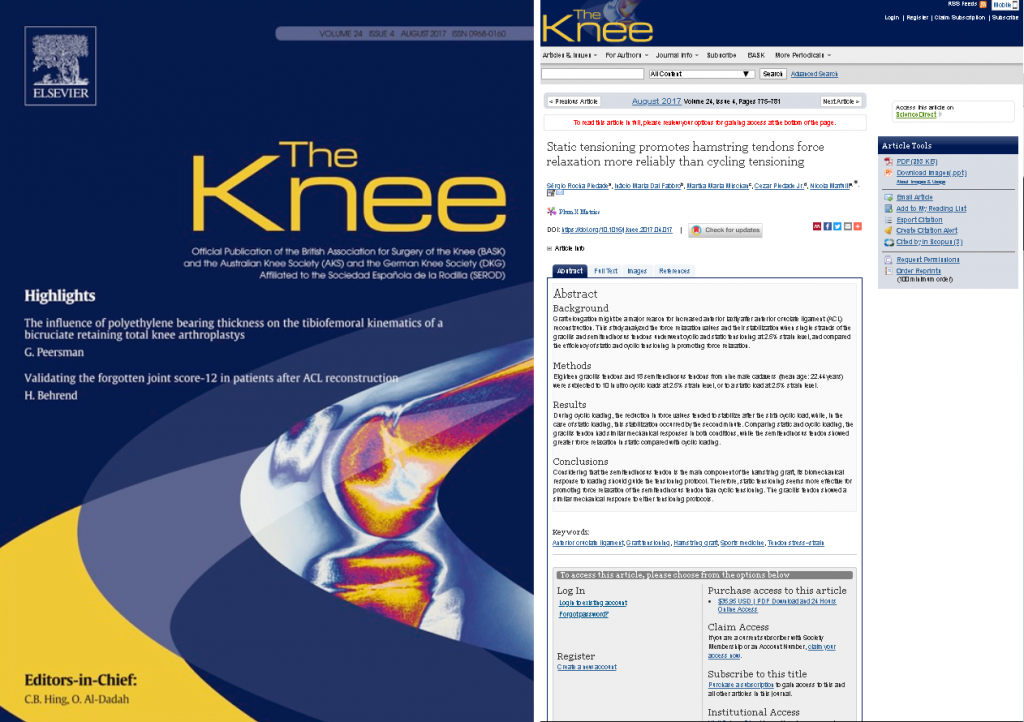Static tensioning promotes hamstring tendons force relaxation more reliably than cycling tensioning
Artigo Publicado na revista ” The Knee” na edição de maio 2017

Leia o artigo na integra: https://www.thekneejournal.com/article/S0968-0160(17)30099-6/fulltext
Abstract
Background
Graft elongation might be a major reason for increased anterior laxity after anterior cruciate ligament (ACL) reconstruction. This study analyzed the force relaxation values and their stabilization when single strands of the gracilis and semitendinosus tendons underwent cyclic and static tensioning at 2.5% strain level, and compared the efficiency of static and cyclic tensioning in promoting force relaxation.
Methods
Eighteen gracilis tendons and 18 semitendinosus tendons from nine male cadavers (mean age: 22.44 years) were subjected to 10 in vitro cyclic loads at 2.5% strain level, or to a static load at 2.5% strain level.
Results
During cyclic loading, the reduction in force values tended to stabilize after the sixth cyclic load, while, in the case of static loading, this stabilization occurred by the second minute. Comparing static and cyclic loading, the gracilis tendon had similar mechanical responses in both conditions, while the semitendinosus tendon showed greater force relaxation in static compared with cyclic loading.
Conclusions
Considering that the semitendinosus tendon is the main component of the hamstring graft, its biomechanical response to loading should guide the tensioning protocol. Therefore, static tensioning seems more effective for promoting force relaxation of the semitendinosus tendon than cyclic tensioning. The gracilis tendon showed a similar mechanical response to either tensioning protocols.
Autors
- Sérgio Rocha Piedade
- Inácio Maria Dal Fabbro
- Martha Maria Mischan
- Cezar Piedade Jr.
- Nicola Maffulli
Publication
A revista The Knee é uma revista internacional que publica estudos sobre o tratamento clínico e as características biomecânicas fundamentais dessa articulação, sendo um veículo relevante para cirurgiões, engenheiros biomédicos, especialistas em imagem, cientistas de materiais, pessoal de reabilitação e todos aqueles interessados no joelho. Os tópicos abordados incluem, mas não estão limitados a: • Anatomia, fisiologia, morfologia e bioquímica; • estudos biomecânicos; • Avanços no desenvolvimento de dispositivos protéticos, ortopédicos e de aumento; • técnicas de imagem e diagnóstico; Patologia; • trauma; • Cirurgia; Reabilitação.
KNEE, August 2017, Volume 24, Issue 4, Pages 775–781

